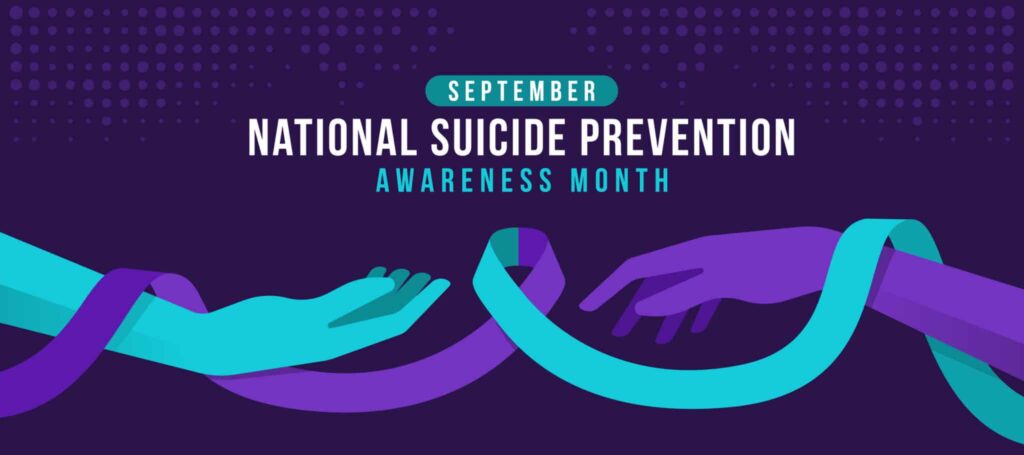Burnout in the health care profession continues to rise as the shortage of doctors, nurses, resident, and others rises along with the population. Left undetected and untreated, burnout can lead to chronic depression, suicide attempts, and suicide itself.
This September is National Suicide Prevention Month, and National Physician Suicide Awareness Day earlier this month shone a spotlight on causes, including the continued stigma associated with “not being strong enough” to be successful. “The message still needs to get out to health care workers and they need to believe that the change makes things safer for them,” said Stefanie Simmons, MD, chief medical officer of the Dr. Lorna Breen Heroes’ Foundation. This Foundation was established during the Covid 19 Pandemic, when Dr. Breen took her own life after experiencing long hours, stressful hospital environments, and deaths and near-deaths of millions around the world.

“When health care workers don’t know the status of their licensing questions, they will assume the worst,” Dr. Simmons said. “So, it’s important to communicate what the rules are.”
In a study conducted by the American Medical Association (AMA), four in 10 physicians told researchers they were reluctant to seek help.
A study by the American Hospital Association (AHA), the stigma associated with mental health, depression, and suicide was a top reason why physicians and others did not seek out behavioral health care, including fear of losing hospital privileges via the credentialing process.
Also according to the AMA, physicians have higher rates of depression and suicide than the general public.
The AMA sponsored a campaign to support the health and well-being of medical students, residents and physicians and included positive examples of making it more comfortable to report feelings of deep depression and other mental health impairments, but according to the Dr. Lorna Breen Heroes’ Foundation, which began tracking states and hospitals in 2022, just 19 states met the best practice standards and no hospital credentialing standards met the bar.

The Federation of State Medical Boards (FSMB), AHA, Federation of State Physician Health Programs, The Joint Commission and many other organizations are also on the same page as the AMA when it comes to physician well-being, and walking the often fine line between protecting health care workers while reducing the risk that patients and colleagues may suffer when behavioral health issues go unreported.
The AMA has included the physician well-being work in its Joy in Medicine Health System Recognition Program (PDF) and leadership in the AMA’s state advocacy team has helped develop best practice standards used in awarding states and organizations the Wellbeing First Champion Badge that they can display as a sign that they prioritize the health care workforces’ mental health and wellbeing.
The U.S. Health Resources and Services Administration has made some strides in addressing these challenges, and allocated over $103 million through three grant programs that aim to reduce burnout and promote mental health among the health workforce.
- Promoting Resilience and Mental Health Among Health Professional Workforce – HRSA plans to provide $29 million over three years to around 10 health care organizations to support members of their workforce. According to HRSA, the funding can be used for “establishing, enhancing, or expanding evidence-informed programs or protocols to adopt, promote and implement an organizational culture of wellness that includes resilience and mental health among their employees.” It is important to note that medical associations can apply for this funding. ACEP worked hard to ensure that some of the Dr. Lorna Breen funding could be provided to medical societies, since they know the unique needs of their own members and how best to support them.
- Health and Public Safety Workforce Resiliency Training Program – HRSA will provide approximately $68 million over three years to approximately 30 educational institutions and other nonprofit entities that train providers who are early in their health careers. According to HRSA, the funding can be used to help provide “evidence-informed planning, development and training in health profession activities in order to reduce burnout, suicide and promote resiliency among the workforce.”
- Health and Public Safety Workforce Resiliency Technical Assistance Center – HRSA will make one award totaling $6 million over three years to “provide tailored training and technical assistance to HRSA’s workforce resiliency programs.”
Suicide ideation among physicians has risen over the last two years, a 2025 Medscape report found.

The “Medscape Physicians and Suicide Report 2025” surveyed 5,741 physicians across more than 29 specialties between July 1 and Oct. 2, 2024.
Following are a few highlights:
- One in 6 physicians have contemplated or attempted suicide. The rate of contemplated suicide has risen from 9% in 2022 and 2023 to 15% in 2024.
- 38% said they knew one or more fellow physicians who had attempted or thought about suicide.
- 21% indicated they knew at least one person in medical support staff and 9% said they knew of at least one person among administrators who had contemplated suicide.
- 57% said physician suicide was a significant issue in the profession.
This is not an easy trend to address, given the relationship between suicide and stigma, as well as the practical matters of potentially losing their medical license and hospital privileges. The same report shared the primary reasons why physicians do not seek help:
- They believe they can deal with this without help from a professional — 49%
- They don’t want to risk disclosure to medical board — 41%
- They are concerned about it being on their insurance record — 30%
- They are worried about their colleagues finding out — 24%
- They don’t trust mental health professionals — 11%
26% listed other reasons.
Dr. Lorna Breen was a sister, daughter, friend and physician
“I know that much good came from Breen’s life,” said Former Virginia Governor, Ralph Northam, MD. “Now I hope some good can come from her death, and that her loss raises our awareness around mental health in the medical community.”
The Foundation’s mission is to reduce burnout of health care professionals and safeguard their well-being and job satisfaction. We envision a world where seeking mental health services is universally viewed as a sign of strength for health care professionals.
The Foundation has three main bodies of work targeted at making a long-standing impact on this issue:
- Advising the health care industry to implement well-being initiatives;
- Building awareness of these issues to reduce the stigma; and
- Funding research and programs that will reduce health care professional burnout and improve provider well-being.
We applaud the Foundation and the associations and industry leaders who are taking action so that proper care can be given to the care givers who come to work everyday to heal and help others. You can learn more about Dr. Green and her legacy here.


